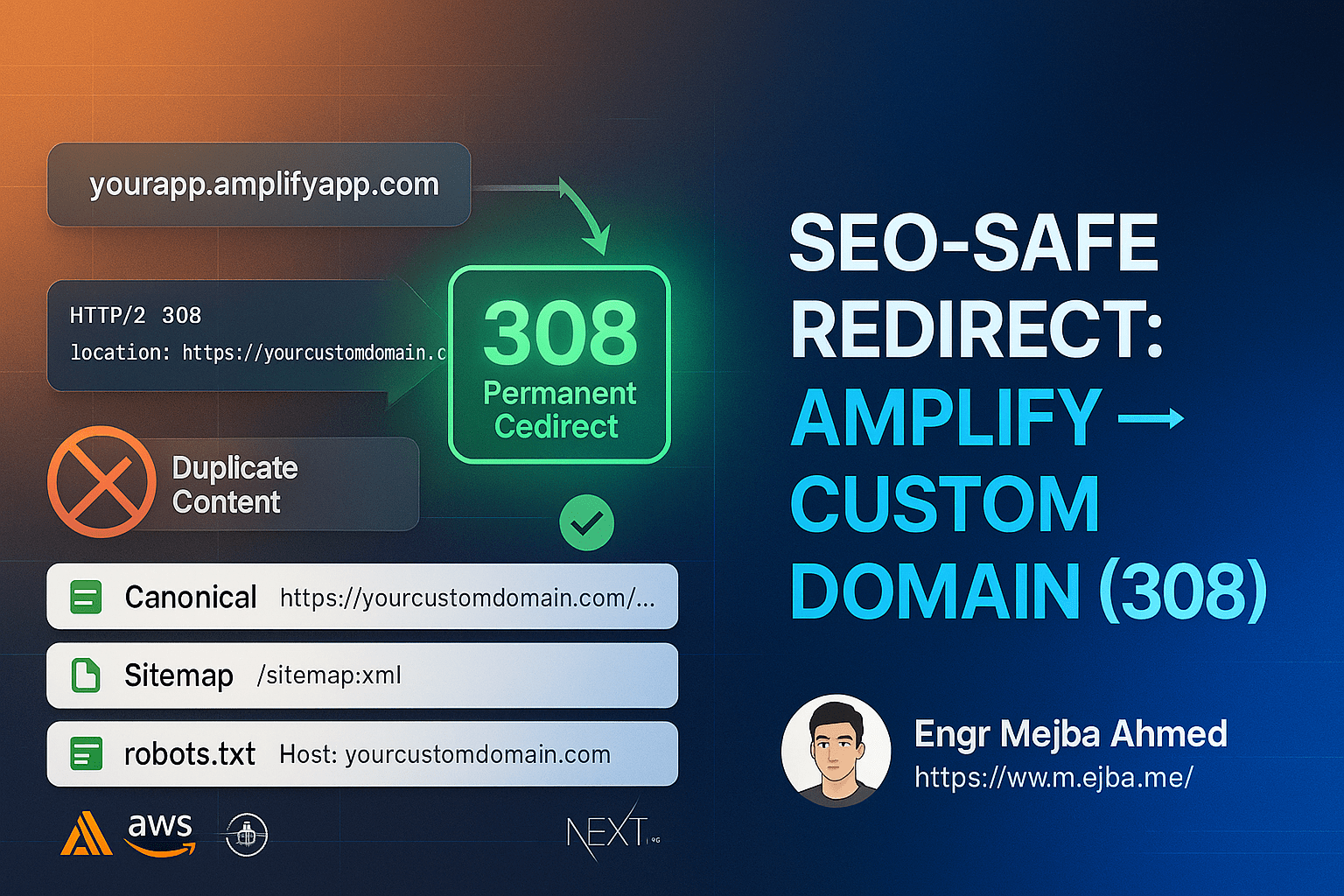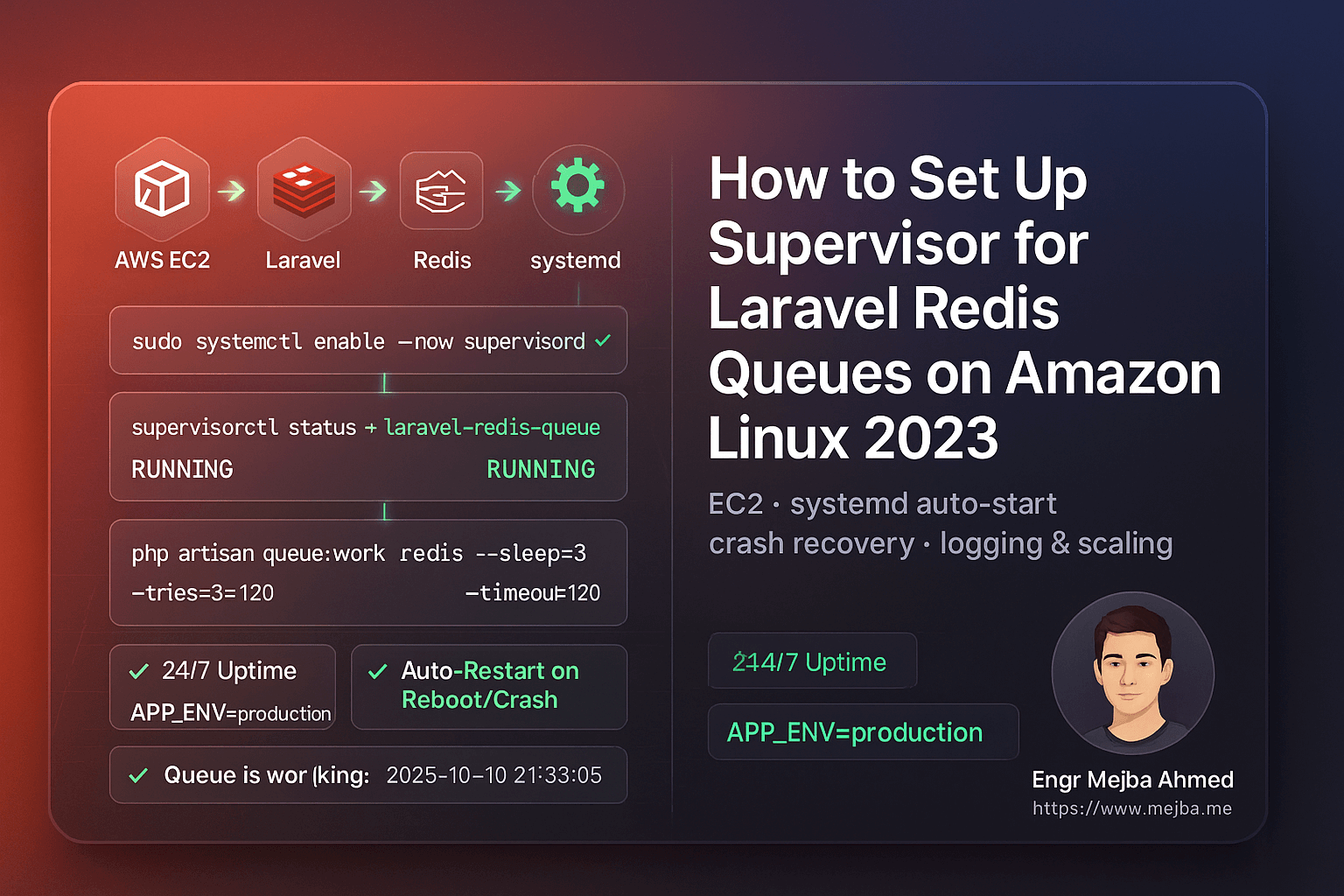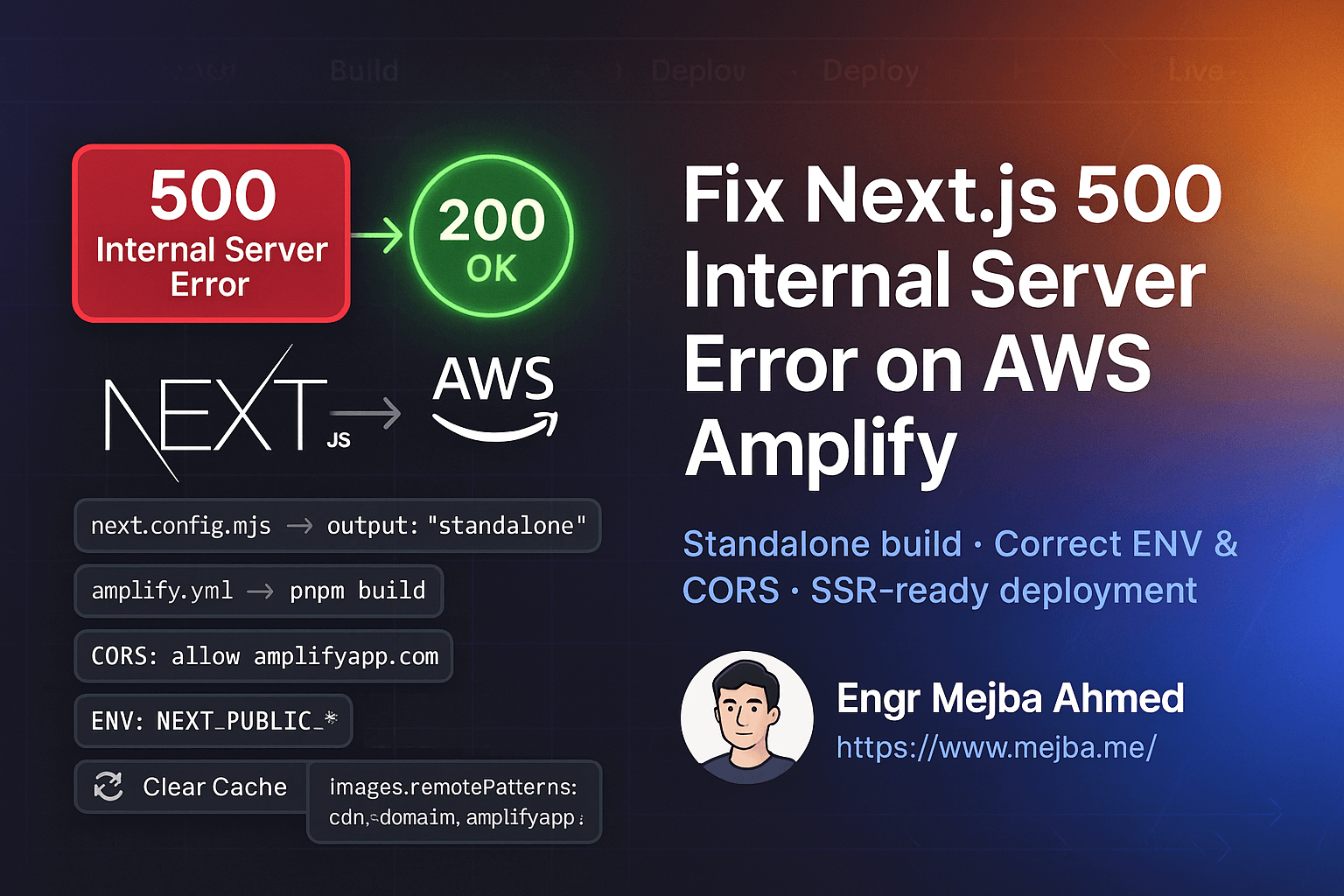How to Set Up an AWS EC2 Server Using Terraform on Mac [Step-by-Step Guide]
Introduction: The Smarter Way to Launch AWS Servers from Mac
If you’ve ever created an EC2 instance manually through the AWS Console, you already know how easy it is to make mistakes — selecting the wrong region, forgetting to configure security groups, or missing SSH key setup.
Now imagine launching your entire cloud infrastructure automatically with just one command. That’s where Terraform comes in.
Terraform is a powerful Infrastructure as Code (IaC) tool that allows you to define, version, and automate cloud deployments across AWS, Azure, Google Cloud, and more. For developers working on a Mac, it offers a clean, efficient, and repeatable way to manage servers — without ever touching the AWS dashboard.
In this guide, you’ll learn exactly how to:
- Configure Terraform on your Mac
- Connect it with AWS credentials
- Write a Terraform configuration file to launch an EC2 instance
- Apply, verify, and manage your deployment with confidence
By the end, you’ll have a fully functional AWS EC2 server deployed using Terraform — reproducible anytime, anywhere.
Step 1: What You Need Before You Begin
Before we dive in, make sure you have the following prerequisites:
🧰 System Requirements
- macOS 12+
- Homebrew (for easy package installation)
- An AWS account with access keys
- Basic knowledge of AWS EC2
☁️ AWS Account Setup
-
Log in to your AWS Console.
-
Go to IAM → Users → Security Credentials.
-
Generate an Access Key ID and Secret Access Key.
- Store them securely — Terraform needs them to authenticate with AWS.
Step 2: Install Terraform on Mac
The easiest way to install Terraform on macOS is through Homebrew.
brew tap hashicorp/tap
brew install hashicorp/tap/terraform
Verify installation:
terraform -version
✅ Output example:
Terraform v1.9.0
on darwin_amd64
That’s it! Terraform is now installed globally on your system.
Step 3: Configure AWS CLI
Terraform communicates with AWS via the AWS CLI. Let’s install and configure it next.
brew install awscli
Once installed, configure it with your credentials:
aws configure
Enter:
AWS Access Key ID: <your-access-key>
AWS Secret Access Key: <your-secret-key>
Default region name: us-east-1
Default output format: json
This creates a config file in ~/.aws/credentials, which Terraform will use for authentication.
Step 4: Set Up a New Terraform Project
Now we’ll create a project directory for your Terraform files.
mkdir terraform-ec2-setup
cd terraform-ec2-setup
Inside this folder, create a new file called main.tf:
touch main.tf
This is where all your Terraform configurations will go.
Step 5: Write Your Terraform Configuration File
Let’s define everything Terraform needs to create an EC2 instance — provider, region, AMI, instance type, and security groups.
Open main.tf and add the following code:
# Specify AWS as the provider
provider "aws" {
region = "us-east-1"
}
# Create a key pair
resource "aws_key_pair" "mac_key" {
key_name = "mac-terraform-key"
public_key = file("~/.ssh/id_rsa.pub")
}
# Create a security group
resource "aws_security_group" "allow_ssh" {
name = "allow_ssh"
description = "Allow SSH inbound traffic"
ingress {
from_port = 22
to_port = 22
protocol = "tcp"
cidr_blocks = ["0.0.0.0/0"]
}
egress {
from_port = 0
to_port = 0
protocol = "-1"
cidr_blocks = ["0.0.0.0/0"]
}
}
# Create an EC2 instance
resource "aws_instance" "my_ec2" {
ami = "ami-0c02fb55956c7d316"
instance_type = "t2.micro"
key_name = aws_key_pair.mac_key.key_name
security_groups = [aws_security_group.allow_ssh.name]
tags = {
Name = "Terraform-Mac-Instance"
}
}
Step 6: Initialize Terraform
Before applying any configuration, initialize Terraform. This downloads all necessary provider plugins.
terraform init
✅ Expected output:
Initializing the backend...
Initializing provider plugins...
Terraform has been successfully initialized!
Step 7: Validate the Configuration
Always validate your .tf files before applying changes.
terraform validate
If everything’s correct, you’ll see:
Success! The configuration is valid.
Step 8: Preview the Infrastructure Plan
Now, let’s see what Terraform will create — without making actual changes yet.
terraform plan
Terraform will output a detailed plan of resources to be created:
+ aws_instance.my_ec2
+ aws_security_group.allow_ssh
+ aws_key_pair.mac_key
This is your chance to confirm the configuration before deployment.
Step 9: Apply and Create the EC2 Instance
Once you’re ready, deploy the instance:
terraform apply
Type yes when prompted.
Terraform will:
- Create a key pair
- Set up a security group
- Deploy an EC2 instance
✅ Expected output:
Apply complete! Resources: 3 added, 0 changed, 0 destroyed.
Outputs:
instance_public_ip = "54.210.19.33"
You can now SSH into your new instance:
ssh ec2-user@54.210.19.33
Step 10: Verify in AWS Console
Open your AWS Management Console → EC2 Dashboard, and you’ll see your new instance running under:
Name: Terraform-Mac-Instance
This confirms Terraform has successfully deployed your infrastructure.
Step 11: Clean Up Resources (Optional)
When you’re done testing, always destroy the infrastructure to avoid unnecessary AWS costs.
terraform destroy
Type yes to confirm.
Step 12: Understanding Terraform Workflow
Here’s a quick breakdown of the Terraform lifecycle commands you’ll use frequently:
| Command | Description |
|---|---|
terraform init |
Initializes project and installs provider plugins |
terraform validate |
Checks configuration syntax |
terraform plan |
Previews proposed infrastructure changes |
terraform apply |
Applies and deploys changes to AWS |
terraform destroy |
Deletes the created resources |
Step 13: Common Issues and Fixes
❌ Error: Invalid AWS Credentials
Check your ~/.aws/credentials file or rerun aws configure.
❌ Permission Denied (publickey)
Ensure your SSH key is added correctly in the Terraform key pair resource and in your Mac’s ~/.ssh directory.
❌ Security Group Not Found
Terraform creates dependencies automatically, but if you modify resource names, re-run terraform init.
❌ State File Conflicts
Never manually edit terraform.tfstate. Use remote backends like S3 for team environments.
Step 14: Best Practices for Terraform + AWS on Mac
✅ Use Remote State Storage
Store Terraform state in AWS S3 with DynamoDB locking to avoid conflicts:
terraform {
backend "s3" {
bucket = "terraform-state-bucket"
key = "ec2/terraform.tfstate"
region = "us-east-1"
}
}
✅ Version Control
Add .terraform/ to your .gitignore and store .tf files in Git for collaboration.
✅ Modularize Infrastructure
Use Terraform modules for reusable configurations — such as vpc, ec2, and security_groups.
✅ Tag Everything
Always tag AWS resources for easier management, billing, and auditing.
Step 15: Automating EC2 Setup with Variables
Create a variables.tf file to make configurations reusable:
variable "instance_type" {
default = "t2.micro"
}
variable "region" {
default = "us-east-1"
}
Then update main.tf:
provider "aws" {
region = var.region
}
resource "aws_instance" "my_ec2" {
ami = "ami-0c02fb55956c7d316"
instance_type = var.instance_type
}
Run:
terraform plan
terraform apply
This makes your deployment flexible and environment-agnostic.
Step 16: Bonus – Automate with GitHub Actions (CI/CD)
For advanced users, automate Terraform deployments directly from GitHub.
Create .github/workflows/deploy.yml:
name: Terraform AWS Deploy
on:
push:
branches: [ "main" ]
jobs:
deploy:
runs-on: ubuntu-latest
steps:
- uses: actions/checkout@v3
- name: Setup Terraform
uses: hashicorp/setup-terraform@v2
- name: Terraform Init
run: terraform init
- name: Terraform Apply
run: terraform apply -auto-approve
This pipeline runs Terraform automatically every time you push to main — perfect for team automation.
Quick Takeaways
- 💻 Terraform lets you automate AWS EC2 setup from your Mac with clean, reusable code.
- 🔐 Use IAM access keys for authentication — never hard-code credentials.
- 🧠 Validate and preview plans before applying.
- 🧩 Modularize your Terraform setup for scalability.
- ☁️ Clean up unused resources to control AWS costs.
Call to Action
Ready to take your AWS automation to the next level? Mastering Terraform on Mac is just the start — from here, you can expand into managing multi-environment deployments, S3 buckets, VPCs, and even Kubernetes clusters — all through code.
👉 Start now by setting up your first Terraform-managed EC2 instance, and experience how effortless cloud automation can be.
FAQ
Q: What is Terraform used for?
Terraform automates infrastructure deployment on cloud platforms like AWS, Azure, and Google Cloud through simple configuration files.
Q: Is Terraform free to use?
Yes. Terraform CLI is open source, though HashiCorp offers paid versions for teams and enterprise automation.
Q: Can I use Terraform on Windows or Linux too?
Absolutely. Terraform runs on all major operating systems. The setup commands differ slightly by platform.
Q: How do I SSH into my Terraform EC2 instance?
Use your SSH private key and the instance’s public IP:
ssh ec2-user@<instance_ip>
Q: Should I delete resources after testing?
Yes — always run terraform destroy after testing to avoid unexpected AWS billing.

![How to Set Up an AWS EC2 Server Using Terraform on Mac [Step-by-Step Guide]](https://www.mejba.me/storage/01JQTYYFAQGMSYRS3402PTZK5C.webp)



